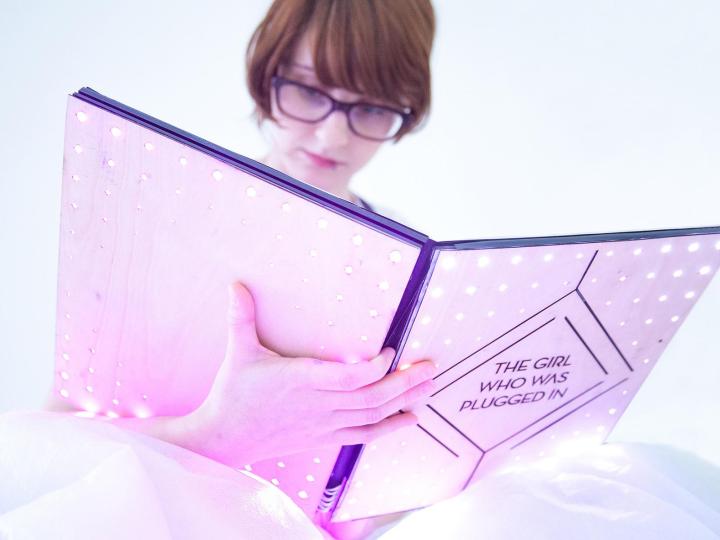
A new project from researchers at the Massachusetts Institute of Technology enables authors to provide their readers with physical feedback and sensations while they’re in the process of turning the pages. A new concept device spotted by The Verge combines a vest harness with a smartbook that can send over commands and light up on cue.
Imagine warming up while the story’s characters are sat in the sun, or feeling vibrations that coincide with a train journey in the novel. These possibilities are what ‘Sensory Fiction’ is designed to explore. The ambient lighting is an important part of the experience too, and again can be coded to go along with the events of the book.
“Traditionally, fiction creates and induces emotions and empathy through words and images,” writes the project team. “By using a combination of networked sensors and actuators, the Sensory Fiction author is provided with new means of conveying plot, mood, and emotion while still allowing space for the reader’s imagination. These tools can be wielded to create an immersive storytelling experience tailored to the reader.”
Wearable tech has never been in vogue more than it is right now, but whether readers will be prepared to strap on a physical accessory to get the most from their literature remains to be seen. Still, it’s an interesting idea which presumably could feature in the Harry Potter and Hunger Games epics of the future.
SENSORY FICTION from Felix on Vimeo.


